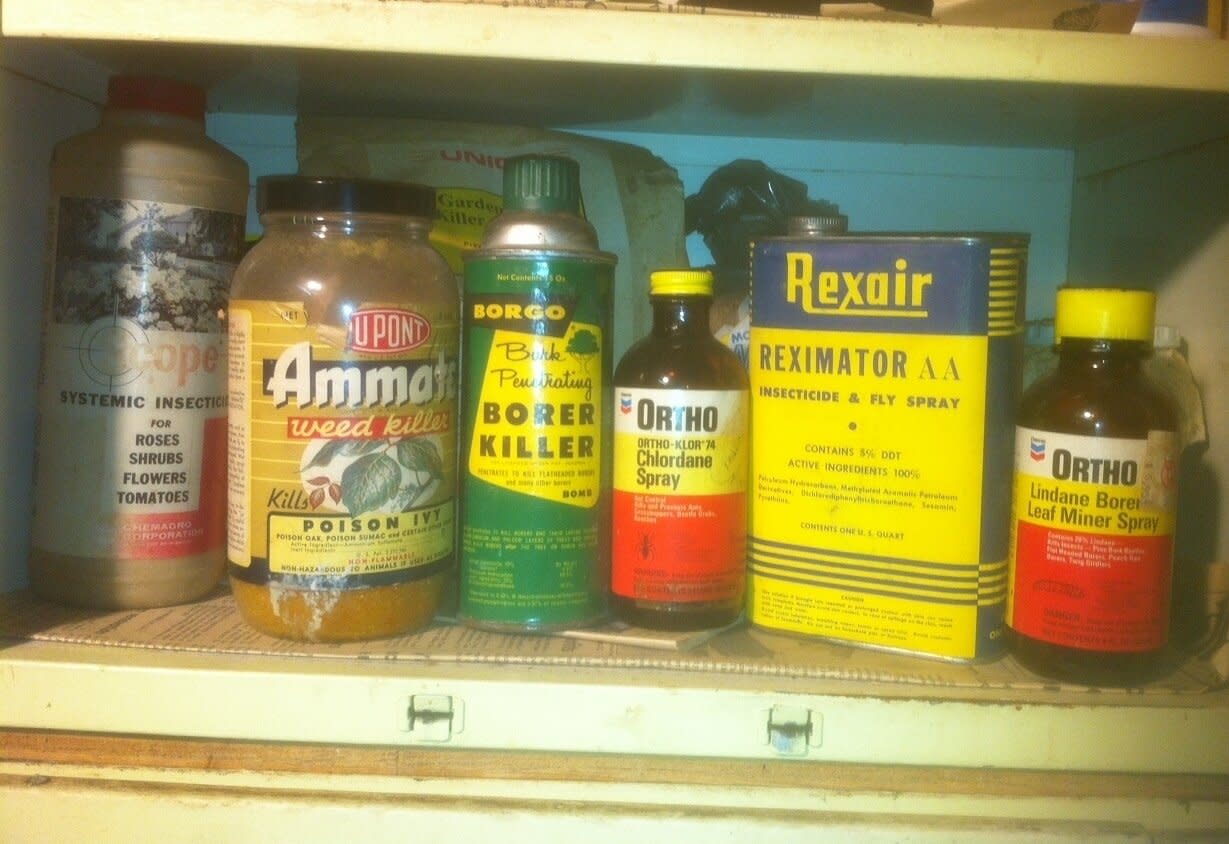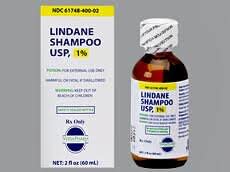Welcome to Dad's Toxic Waste Museum!

Strange brews. See what they'll do to you. Photo by Steve Bender.
My Dad was an enthusiastic, conscientious, and thrifty gardener. He never threw away anything. This latter point was never illustrated any better than during my visit home last week. I walked into his workshop in the basement and opened the door to his garden pesticide cabinet. There stood a murder's row of dangerous and mostly banned pesticides. Let's all take the tour!
Lindane Borer & Leaf Miner Spray As the name implies, Dad used this stuff against borers that attacked the trunks of his dogwoods, lilacs, and fruit trees. By 2006, it had been identified as a likely carcinogen and it was taken off the market in 2007. But get this -- lindane had a secondary, non-gardening use. It was the key ingredient in shampoos that kill lice. Those products remain on the market. Feel free to massage your scalp with a likely carcinogen today!

emAh, lindane! The healthy choice! Photo by kaiser permanente./em
Reximator Insecticide & Fly Spray Can't help it. Every time I read the name of this product, the first words that pop to mind are "The Terminator." Know what Reximator is? DDT. Yep, the same stuff that was banned in the U.S. in 1972, principally for its devastating effects on birds and other wildlife. It's the pesticide that inspired Rachel Carson's landmark book, Silent Spring, that gave birth to the modern environmental movement. But hey -- Reximator terminates mosquitoes, an important benefit if malaria is still widespread in your neighborhood.
Chlordane Prior to 1988, chlordane was the chemical poured around the foundations of homes to control termites. And it did a terrific job, mainly because it adheres to soil so tightly that it never goes away. So if your home had a chlordane treatment 30 years ago, it's probably still there. Unfortunately, chlordane was identified as a human carcinogen and banned in 1988. It's probably still causing cancer in termites today.
Borgo Bark-Penetrating Borer Killer Geez, Dad must have had problems with borers! More borer stuff. This product came in a ready-to-use spray can. No mixing, no mess. Problem was, the aerosol used in it contained vinyl chloride that causes liver cancer. The EPA took it off the market in 1974. Bark no longer need fear sudden penetration.
Ammate Weed Killer Newbie gardeners can't remember a time before Roundup, but Grumpy can. Ammate is what Dad used to kill poison ivy, brambles, freshly cut stumps, and all sorts of other weeds. Its active ingredient, ammonium sulfamate, has been determined to be only slightly toxic to humans, but highly toxic to birds. It hasn't been banned in the U.S., although it is no longer sold in Europe. But because it is highly water-soluble and moves quickly through the soil, it can easily pollute streams, lakes, and groundwater.
Scope Systemic Insecticide Dad used this to control sucking insects on roses and other ornamental plants. I hope he never used it on tomatoes, as recommended on the label, because its active ingredient is systemic -- the plant absorbs it into its tissues and bugs die when they feed on the plant. Systemics aren't supposed to move into the fruits of a plant, like tomatoes, but why take the chance? This product is very toxic to bees and fish and, like Ammate, moves through the soil to pollute water. Yum. Drink up.
What To Do With Old Pesticides Pesticides are not fine wines. They don't get better with age. They lose potency over the years and don't work like they're supposed to. So get rid of them. The question is how and where.
That's not a problem for Grumpy. Each spring, his city of Hoover, Alabama conducts a Hazardous Waste Disposal Day. This year, it's Saturday, April 20. Residents can drop off all sorts of hazardous waste -- paint, pesticides, oil, car batteries, Marmite, sweet red wine, and even guns and ammo -- and the city will dispose of them properly and safely. Contact your city or county sanitation department to see how you can get rid of the toxic waste museum in your basement.

